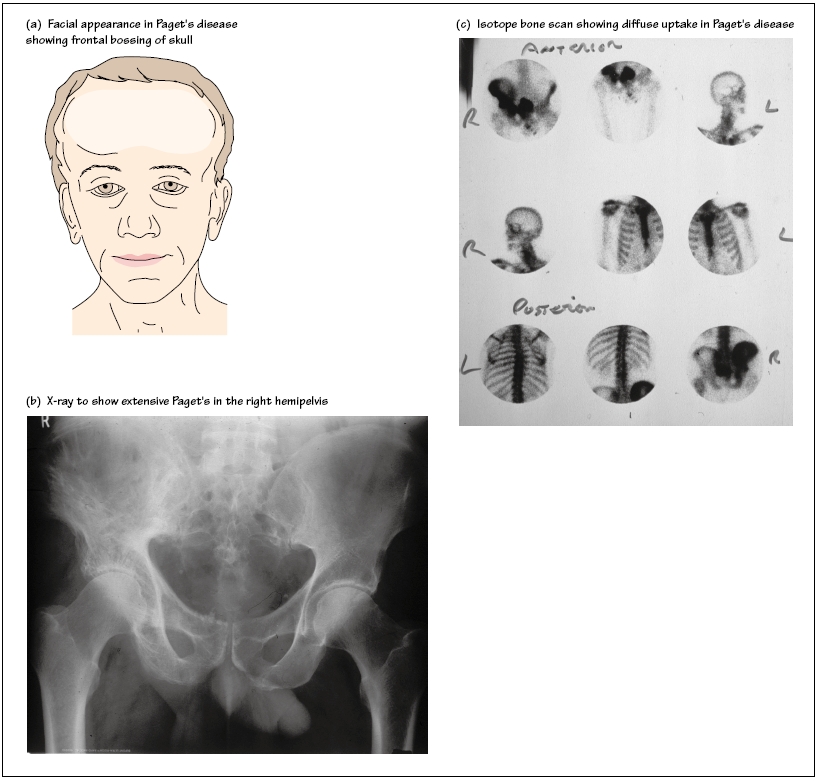
Paget’s disease (osteitis deformans) is a chronic bone disorder resulting in bone pain and deformity. It affects up to 10% of the elderly, more commonly men, although it may be asymptomatic and discovered on a routine blood test or X-ray. Most commonly patients present with bone pain or deformity–these are characteristic of the disorder and include bowing of the long bones, skull enlargement with frontal bossing and, less commonly, pathological fractures (Fig. 53a, b and c).
Paget’s disease is characterized by abnormal bone remodelling. Often the disease is picked up by the finding of a high alkaline phosphatase on biochemical screening. Calcium and PTH concentrations are normal but measurements of markers of bone turnover, such as serum bone-specific alkaline phosphatase (BAP) and osteocalcin indicating bone formation and urinary deoxypyridinoline and N-terminal telopeptide indicating bone resorption, may be helpful.
Stay updated, free articles. Join our Telegram channel

Full access? Get Clinical Tree







